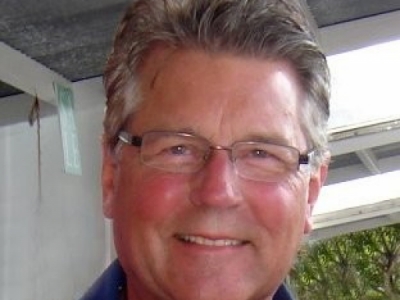
Posted on February 26, 2019
Image of Charlie Helms, CEO/Harbormaster at Crescent City Harbor District
Though they submitted a letter to the State Water Resources Control Board supporting the removal of four dams on the Klamath River, harbor commissioners continue to voice concerns about potential impacts from sediment and silt.
During his CEO report on Tuesday, Harbormaster Charlie Helms said he discussed the possibility of financial assistance from the Klamath River Renewal Corporation for dredging costs if a large amount of silt and sediment affected the port as a result of dam removal.
Helms said he spoke with KRRC consultant Eli Naffah about the possibility of obtaining $1 million in mitigation dollars from the nonprofit organization tasked with dam removal, but Naffah said he couldn’t guarantee that would be possible.
“We would have to assess how much of the silt came in was the result of the dam removal process,” Helms said. “So if we got a foot (of silt) in there and all of a sudden we get 3 feet, they’re responsible for 60 to 66 percent.”
According to KRRC Community Liaison Matt Cox, however, the $1 million figure comes from a general discussion about dredging costs at the harbor, but it is not a KRRC number. KRRC has not committed to dredging or setting aside money for dredging, Cox said.
The Crescent City Harbor District is in the process of renewing its 10-year dredging permit, Helms said Friday. The U.S. Army Corps of Engineers is the harbor’s program manager and it must get approval from the California Coastal Commission, the Regional Water Quality Control Board, the California Department of Fish and Wildlife and the National Marine Fisheries Service, Helms said.
The harbor district has to “justify what we’re trying to do,” Helms said.
“Then our next challenge is does our dredge still work?” He said.
Helms said he contacted a mechanic to see if the port’s dredge will start. He said the piece of equipment has been unassembled and has been sitting at Fashion Blacksmith since he began working for the harbor district.
Helms’ next goal is to get a company that specializes in Lidar and ultrasound mapping to determine how much dredging the port actually needs. He said he will initially approach the U.S. Army Corps of Engineers to see if they will conduct that work for free or for a small fee, otherwise he would have to hire a private company.
“After the survey we may not need to (dredge) for a little bit,” he said. “But we want to do another survey roughly a year later to set a baseline to be prepared in case of the influx of silt from the Klamath.”
Boats are currently able to enter and exit the port, Helms said, so dredging isn’t necessary.
“But we got to be prepared,” he said.
The State Water Resources Board is collecting public input on a draft environmental impact report in response to a KRRC request for a Clean Water Act Section 401 certification for the removal of the Copco 1, Copco 2 and Iron Gate dams on the Klamath River. Those three dams and the J.C. Boyle dam in Oregon are part of PacifiCorp’s Klamath Hydroelectric Project.
KRRC, with PacifiCorp’s support, expects to start drawing down the reservoirs behind those dams and begin the removal process in January 2021.
According to Cox, based on the DEIR, KRRC doesn’t think there will be dredging needed at the harbor as a result of the project. The DEIR estimates that during the reservoir drawdown and dam removal process the amount of sediment transported by the Klamath River to the ocean will be similar to what the river currently transports in a year with average water flow.
“The DEIR also states that the ‘… short-term (less than two years following dam removal) and long-term (2-50 years following dam removal) effects on the Proposed Project on sediment delivery to the Pacific Ocean would be less-than significant…’” Cox said, quoting from the DEIR.
By 2020 there will be an estimated 15.1 million cubic yards, or 14.6 million tons of sediment stored in the J.C. Boyle, Copco No. 1 and Iron Gate reservoirs, according to the DEIR. The report predicts that about 5.8 million tons of material would be washed downstream from the Klamath River to the Pacific Ocean. About 4 million tons would be fine sediment and 1.8 million tons would be sand and larger sediment, according to the DEIR.
On Tuesday, Harbor Commissioner Wes White asked Helms if the port should determine how much sediment is in the harbor currently so they would be able to have a baseline, while his colleague Brian Stone asked if the district should hire a hydrologist to determine how the water flows on the coast.
Helms said he thinks the latter action would be premature until the port obtains its dredge permit. The port was last dredged in 2013, he said.
Former commissioner Pat Bailey said massive storm events have resulted in huge piles of debris on Anchor Way. He said he couldn’t be sure, but he thinks all of it has come from the Klamath.
Meanwhile, Rick Shepherd, one of the harbor district’s newest commissioners, said when he and other commercial fishermen are at the mouth of the Klamath, the material from the river “always goes north.”
“During the 70s and 80s that river ran mud,” he said. “There was hydraulic mining up in those hills and the logging, there was a tremendous amount of mud. This harbor survived it.”
Source: triplicate.com





